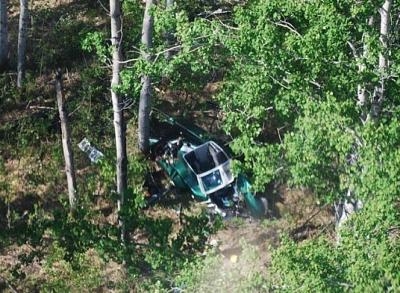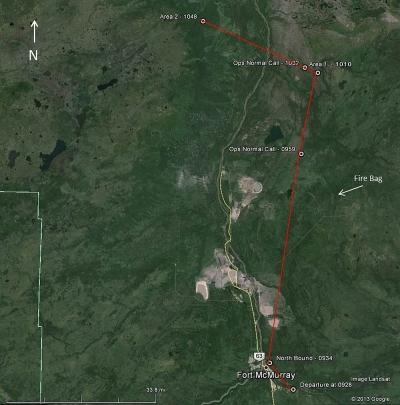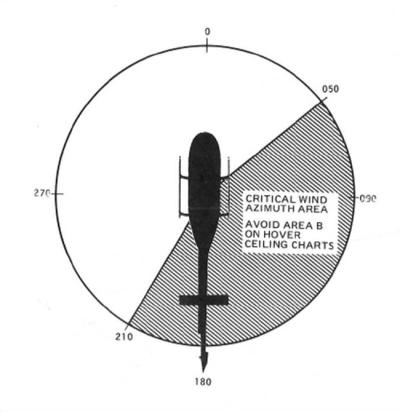Aircraft Went Down While Locating Discarded Caribou Tracking Collars
The Transportation Safety Board of Canada has released a final report in an accident involving a Wood Buffalo Helicopters Bell 206B helicopter (registration C-FZWB, serial number 1342) that was conducting wildlife survey work approximately 75 nautical miles north of Fort McMurray, Alberta. In the course of identifying a landing site, the helicopter entered an un-commanded rotation to the right, and descended into a stand of trees at 1058 Mountain Daylight Time. The pilot and right rear seat passenger sustained fatal injuries. The remaining passenger, who occupied the left front seat, was seriously injured. The 406 MHz emergency locator transmitter activated on impact. There was no post impact fire.

The flight was chartered by Alberta Sustainable Resource Development (ASRD) to track discarded caribou radio collars. Two wildlife biologists would use an externally-mounted antenna coupled to a portable receiver to track these collars. Once found, the helicopter would land in the vicinity of the collar, and the biologists would disembark, locate, and retrieve the collar on foot.
The aircraft crew conducted multiple orbits over several areas in an effort to find a suitable place to land. At 1056:34, the helicopter was at 115 feet agl with a ground speed of 16 knots. At this point, a right turn to the south was initiated. The ground speed had reduced to 5 knots. A final global positioning system (GPS) waypoint was recorded at 1056:54 with the aircraft at 18 feet agl with a ground speed of 3 knots. Upon completion of the turn to the south, the helicopter would have been exposed to a tail-wind condition. The helicopter entered an un-commanded rotation to the right. There were no indications of mechanical malfunction prior to or during the rotation. The helicopter descended into a stand of poplar trees 60 to 70 feet tall, coming to rest on its right side.
After ASRD attempted radio contact at 1108, with no response, it received a telephone call from Wood Buffalo Helicopters at 1109 regarding a reported emergency locator transmitter (ELT) signal for C-FZWB. At 1114, a company helicopter was dispatched to the last known co-ordinates to search for the helicopter, arriving over the site at 1143. It located C-FZWB at 1154. Additional rescue resources arrived on scene to help recover the helicopter's pilot and passengers.

Three trees adjacent to the site exhibited damage related to the helicopter's descent through the trees. All 3 showed rotor-blade damage near the tops; 1 tree had been topped and the majority of its branches stripped off.
All of the helicopter's components were identified within a 100-foot radius of the aircraft. The helicopter's cabin and fuselage were in a single piece, but it had sustained substantial impact damage, particularly on the right side of the fuselage. The main rotor head shaft had separated below the rotor head, and was located 26 feet from the wreckage. One main rotor blade had sustained 2 fractures. The other main rotor blade, while still attached to the rotor head, was substantially damaged.
The tail boom was adjacent to the fuselage but it was severed approximately 3 feet aft of the horizontal stabilizers. It had indications that it had struck a tree at that point, on the left side of the tail boom. The remainder of the tail boom, including the vertical fin and tail rotor, was located about 7 feet aft and slightly east of the forward section. The aft section was oriented with the tail cone towards the main wreckage.
The tail rotor was mostly intact with one blade still attached to the yoke. This blade was straight with minor impact damage to the skin. The other blade had fractured just outboard of the yoke, and was lying on the ground approximately 5 feet east of the aft section of tail boom.
The investigation determined that there had been flight control continuity before the accident. Continuity with the engine, transmission, and tail rotor assembly was verified. Damage to the aircraft was consistent with power being produced. Tree impact damage to the main rotor blades was to the under-surface of the blades.
At the time of the occurrence, the pilot was occupying the right front seat, which is the traditional pilot position in helicopters. One passenger was in the right rear seat. Both pilot and the right seat passenger were wearing aviation helmets at the time of the occurrence, and had been secured with the available 4-point harnesses. The surviving passenger, in the left front position, was not wearing a helmet and was using the 4-point harness. This passenger was able to evacuate from the helicopter through the broken front windscreen.
At the time of the occurrence, the helicopter was within the prescribed weight and balance limits.
Records indicate that the pilot was certified and qualified for the flight in accordance with existing regulations. The pilot held a valid commercial pilot license – helicopters, endorsed for the Bell 206 helicopter. At the time of the occurrence, the pilot held a valid Category 1 civil aviation medical certificate with no restrictions.

In its analysis, the Canadian TSB found that the helicopter was operating in a flight regime where it was exposed to the left crosswind and tail wind, which would have placed the relative wind into the critical azimuth zone. While conducting a reconnaissance for landing, the helicopter was flown at a low speed and high power setting. As the pilot progressively reduced speed, the helicopter became increasingly vulnerable to LTE. The damage to the under-surface of the main rotor blades indicated that the pilot attempted to increase his collective control input in an effort to power out of the area. The application of power in this particular flight regime would have exacerbated the right yaw tendency and aggravated the loss of control. The helicopter experienced LTE, causing a loss of directional control at a height above the trees that precluded an effective recovery.
The manufacturer and regulator have produced information to alert pilots to the phenomenon of LTE. The pilot would have been exposed to this information during his initial training and subsequent training on the Bell 206 helicopter. The investigation could not determine the pilot’s level of awareness of LTE in the flight regime in which the helicopter was operating.
The Canadian TSB concluded that the helicopter "entered a flight regime that resulted in a loss of tail rotor effectiveness, causing a loss of directional control at a height that precluded recovery, resulting in a collision with terrain."
(Images from TSB Report)
 ANN's Daily Aero-Term (04.20.24): Light Gun
ANN's Daily Aero-Term (04.20.24): Light Gun Aero-News: Quote of the Day (04.20.24)
Aero-News: Quote of the Day (04.20.24) ANN's Daily Aero-Linx (04.21.24)
ANN's Daily Aero-Linx (04.21.24) Aero-News: Quote of the Day (04.21.24)
Aero-News: Quote of the Day (04.21.24) ANN's Daily Aero-Term (04.21.24): Aircraft Conflict
ANN's Daily Aero-Term (04.21.24): Aircraft Conflict





